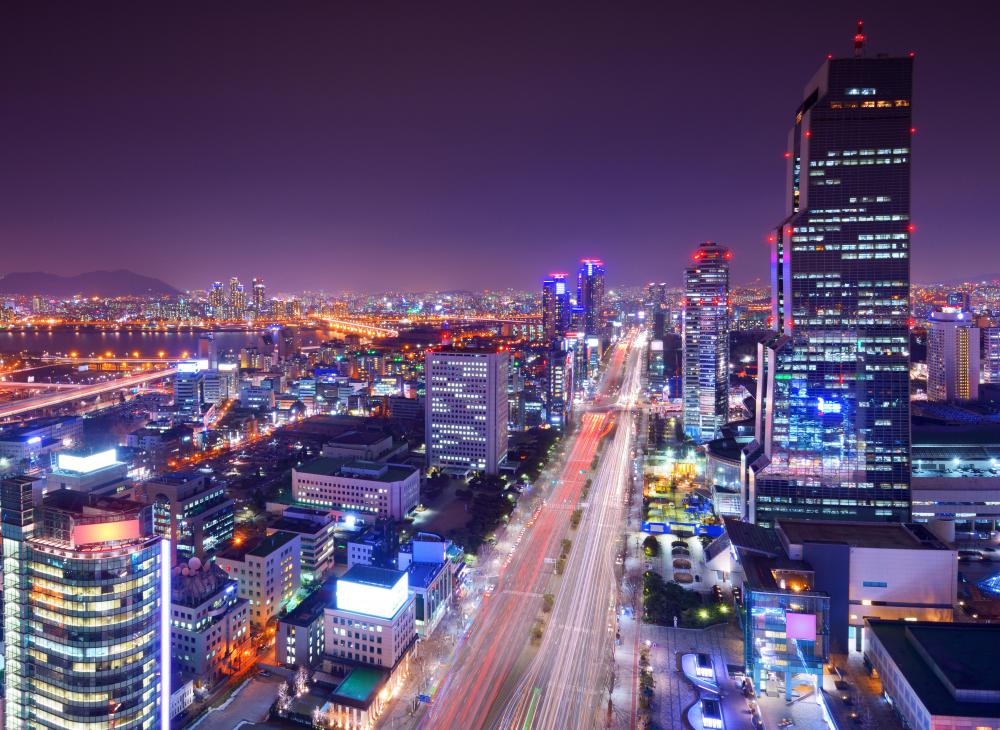At SmartCapitalMind, we're committed to delivering accurate, trustworthy information. Our expert-authored content is rigorously fact-checked and sourced from credible authorities. Discover how we uphold the highest standards in providing you with reliable knowledge.
What are Newly Industrialized Countries?
Newly industrialized countries are members of a socioeconomic classification given to locations that have recently experienced an economic shift towards stability and industry. These countries typically sit at a juncture between Third and First World governments. They have shifted towards a stable government and industrialized economy, but haven’t made permanent changes. Such countries have a higher standard of living and per capita income than other developing nations, but still lower than that of First World countries. Due to this discrepancy, other nations often outsource certain industries or manufacturing jobs to these locations.
The term "newly industrialized countries" originally applied to four emerging Asian countries: Hong Kong, Taiwan, South Korea, and Singapore. These four countries developed significantly faster than many other nearby nations, and in order to describe the distinction made by these governments, economists found they needed to develop a new term. This term was used to describe nations that were pulling ahead of their contemporaries in terms of economic and industrial development, but were still behind other industrialized nations.

There are many factors that need to come together to determine if a nation is a newly industrialized country. One of the most obvious is its level and pacing of industrialization. Countries achieving this status have outpaced their counterparts, but have also achieved a stable level of industrialization. This stability means that the country isn’t tearing itself apart financially, socially, or environmentally in order to achieve its industrialization.

Outside of their industrial achievements, such countries have certain political and social characteristics as well. They typically have stronger governments with less corruption then a Third World country. Non-violent transitions of power and elected officials are common. In addition, social rights for common people are more prevalent.
With this level of social and political stability, coupled with an increasingly industrial workforce, the lives of common people is better than in most Third World countries. The per capita income is higher, which causes a corresponding increase in standard of living. The social and political reforms common in newly industrialized countries create a greater sense of national pride and culture. Countries in this status often have a resurgence of non-religious cultural interest, something that many Third World countries lack.

All of these improvements often come with a price. Fully industrialized and First World countries often use newly industrialized countries as a cheap labor force. While increasing jobs in the host country and making cheaper goods in the guest country may seem positive at first, the benefits aren't always lasting. In these new countries, the infrastructure and laws are often behind. Environmental protection, labor, and commerce laws are sometimes unable to handle the massive influx of new work, and the countries often suffer for it.
AS FEATURED ON:
AS FEATURED ON:













Discussion Comments
@croydon - The problem with that is that, like many other newly industrialized countries, China is a major exporter and does a huge amount of business with the West, including the USA. If China gets into trouble, at this point, the whole world is going to suffer, because the whole world is leaning on the growth of countries in that area.
They have been growing so quickly, that I thought it was inevitable that they would eventually become the main power of the world, and it might be biased but I don't think that would be a great thing, considering how repressed the people of China are at the moment.
But I saw a show recently that pointed out that the population of China is extremely top-heavy. It is aging really fast because of the one child policy. So the elderly of China are going to soon be a huge percentage of the population. And elderly people need care and cannot work, but they use up resources.
@literally45 - I don't think it automatically leads to slave labor. In fact, I think that once a country is industrialized it leads to better education (in order to train the next generation of workers) and that in turn leads to better government and eventually to things like minimum wages and so forth.
Economic stability or growth generally lead to positive changes for the population in my opinion. The only problem is that economic growth isn't sustainable indefinitely, at least within my admittedly limited understanding of it.
I know that industrialization is a good thing. Every country wants to be more developed, wants a better economy, more money and resources for its people. But at the same time, I feel that industrialization is bad because it leads to things like slave labor.
Even though the governments of newly industrialized countries are getting richer, I'm not so sure that the people are. The people pay the price for industrialization because it all depends on their labor. It's also sad that some of these newly industrialized countries are pretty bad in terms of human rights freedom ratings.
Is being a newly industrialized country good or bad?
@donasmrs-- Good question!
I believe there are quite a few on the list right now. The ones I can remember are China, Brazil, Mexico, India, South Africa and a few others.
They're actually easy to spot because these are the countries that all of the jobs are being outsourced to. Almost everything is made in China these days and most customer service representatives for American companies are located in India.
I'm curious to see which other countries will join the list in the next decade.
So which countries are the newly industrialized economies right now?
Post your comments